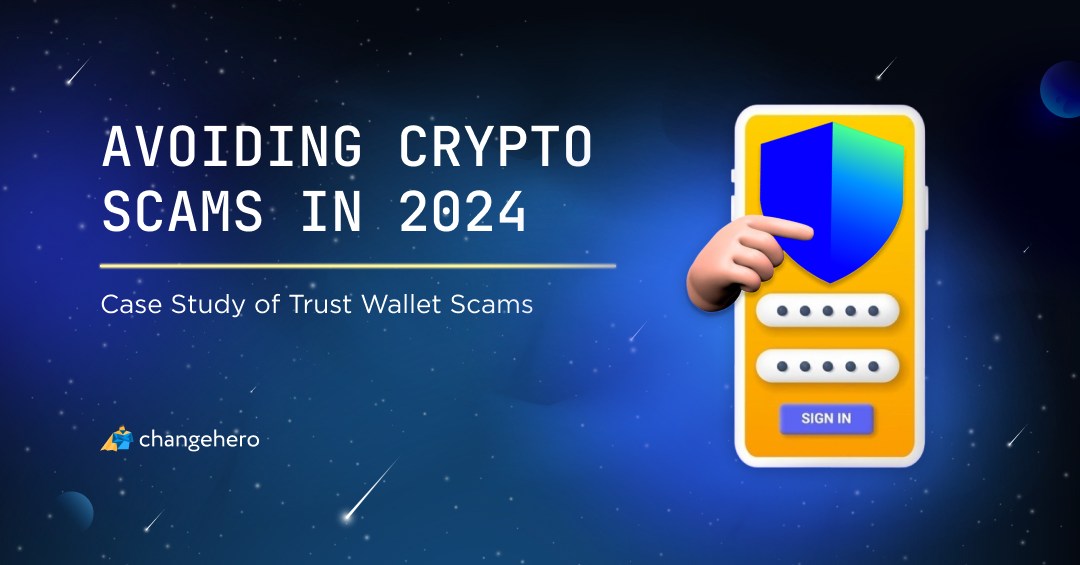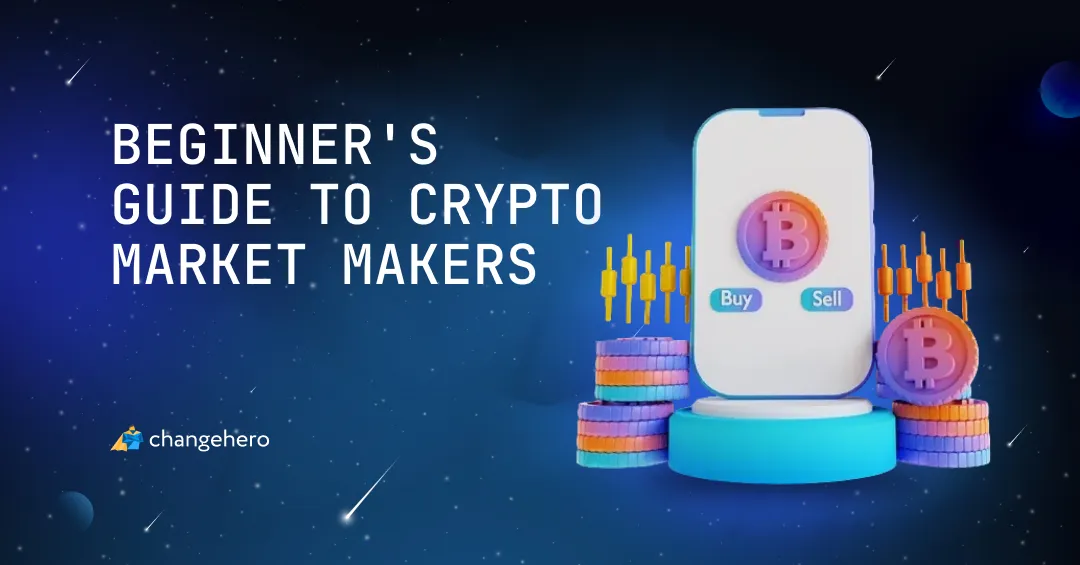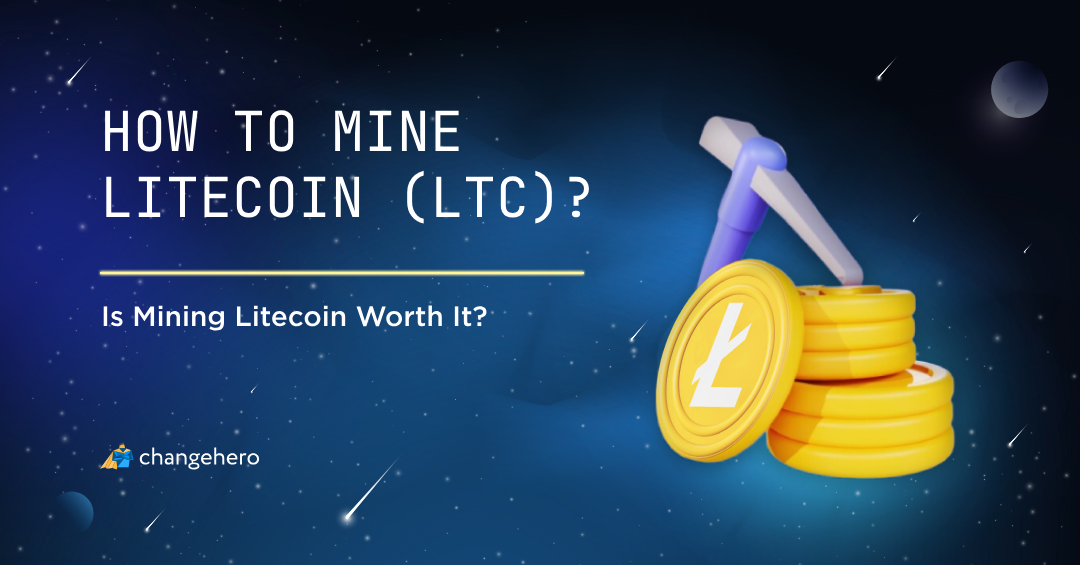How do you connect to a virtual world of crypto if cold hard cash is all that you are willing or able to spend? Through a curious terminal that combines a familiar concept — an automatic teller machine — with an exciting world of digital assets. In this article, the ChangeHero team will introduce you to crypto ATMs and walk you through the process of using one.
Key Takeaways
- Bitcoin automatic teller machine (abbreviated as Bitcoin ATM or BTM) is a machine that facilitates the purchase and selling of Bitcoin and some other cryptocurrencies;
- Bitcoin ATM can be convenient if, for one reason or another, you would rather use cash than a bank card or account. This method of buying and selling crypto can also be more privacy-preserving for small amounts because of lower identification requirements;
- At the same time, Bitcoin ATMs are known to be not the most economical way to buy crypto due to their high transaction fees. Additional downsides include lower availability and security risks.
How do Bitcoin ATMs work?
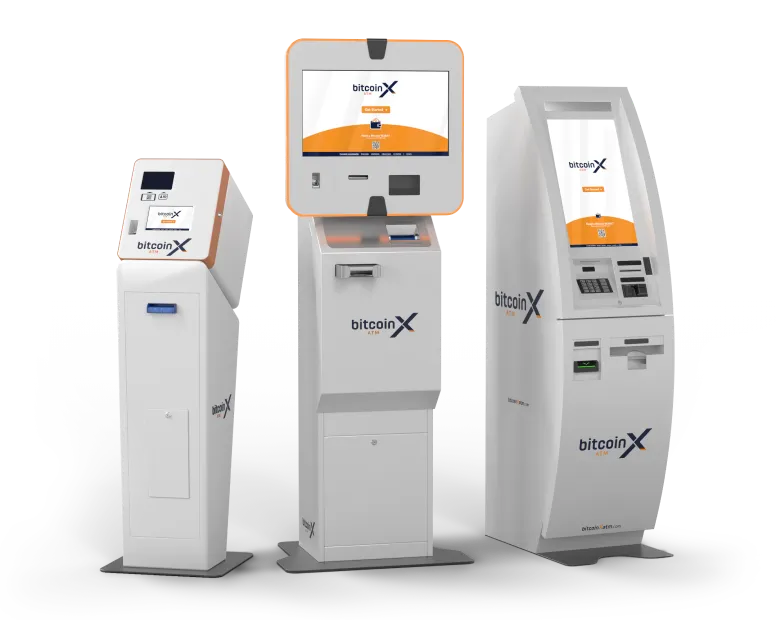
Bitcoin ATMs, also known as BTMs, are physical machines that allow users to buy or sell Bitcoin using cash or debit/credit cards. They function similarly to traditional ATMs, but instead of dispensing cash, they facilitate transactions involving Bitcoin.
Like a normal ATM, a Bitcoin teller machine comes with an interface, usually a touch screen or a screen with a keypad for inputs. Since most commonly it uses cash, it comes equipped with a storage and cash acceptor. Some machines can be equipped with a card reader: in these, you will be able to buy or sell BTC and other cryptocurrencies with a bank card. In other words, BTMs are almost indistinguishable from ATMs, so keep an eye on the branding.
There are two types of Bitcoin ATMs. One-way ATMs only allow users to buy Bitcoin. Users deposit cash or use their debit/credit cards to purchase Bitcoin, which is then sent to their digital wallet. On the contrary, two-way Bitcoin ATMs also allow users to sell Bitcoin. Users can withdraw cash by selling their Bitcoin directly from the ATM.
Most Bitcoin ATMs require users to undergo a verification process, which may involve providing identification documents such as a driver’s license or passport. This step ensures compliance with anti-money laundering (AML) and know-your-customer (KYC) regulations.
Users need a Bitcoin wallet to store their purchased Bitcoin. Some Bitcoin ATMs generate a paper wallet for users, while others require users to provide their wallet address.
The process flow is similar to cash withdrawal in a normal automatic teller machine. To buy Bitcoin, users select the “Buy Bitcoin” option on the ATM and follow the prompts to input the desired amount and payment method (cash or card). For selling Bitcoin, users select the “Sell Bitcoin” option and follow the prompts to input the amount to sell and receive cash.
Why Use a Bitcoin ATM over an Online Crypto Exchange?
Instant Cash-Out
Sometimes purchasing BTC with or in exchange for cold hard cash is needed, and online cryptocurrency exchanges simply cannot do that. Almost all deposit methods for an online platform will need a bank card or account, or third-party virtual currency providers.
Bitcoin ATMs provide a convenient way to convert Bitcoin into cash and vice versa instantly. Users can sell their Bitcoin and receive cash on the spot, eliminating the need to wait for bank transfers or other payment methods.
Convenience
It is hard to beat a crypto exchange in terms of availability, since these online platforms are always accessible through the Internet. Nevertheless, some circumstances may require you to go offline for a BTC purchase.
Bitcoin ATMs are often located in public places, such as shopping malls or convenience stores, making them easily accessible. They provide a quick and hassle-free way to buy or sell Bitcoin without the need for online exchanges or third-party platforms.
Better Anonymity
It can seem a bit counterintuitive but Bitcoin ATMs are also known to be more privacy-preserving. The Bitcoin ATM companies installing these machines are generally required to comply with AML/KYC regulations but the scope of the applicable rules is narrower than on an online platform. Moreover, cash itself is more anonymous than a bank payment or virtual currency.
Bitcoin ATMs offer a certain level of anonymity as they may not require extensive personal information. While some ATMs require verification, others may only require a phone number or email address, allowing users to maintain a certain level of privacy. For instance, Hermes Bitcoin will let you purchase up to $3,000 in BTC with only a phone number verification.
Step-by-Step Instructions for Using a Bitcoin ATM
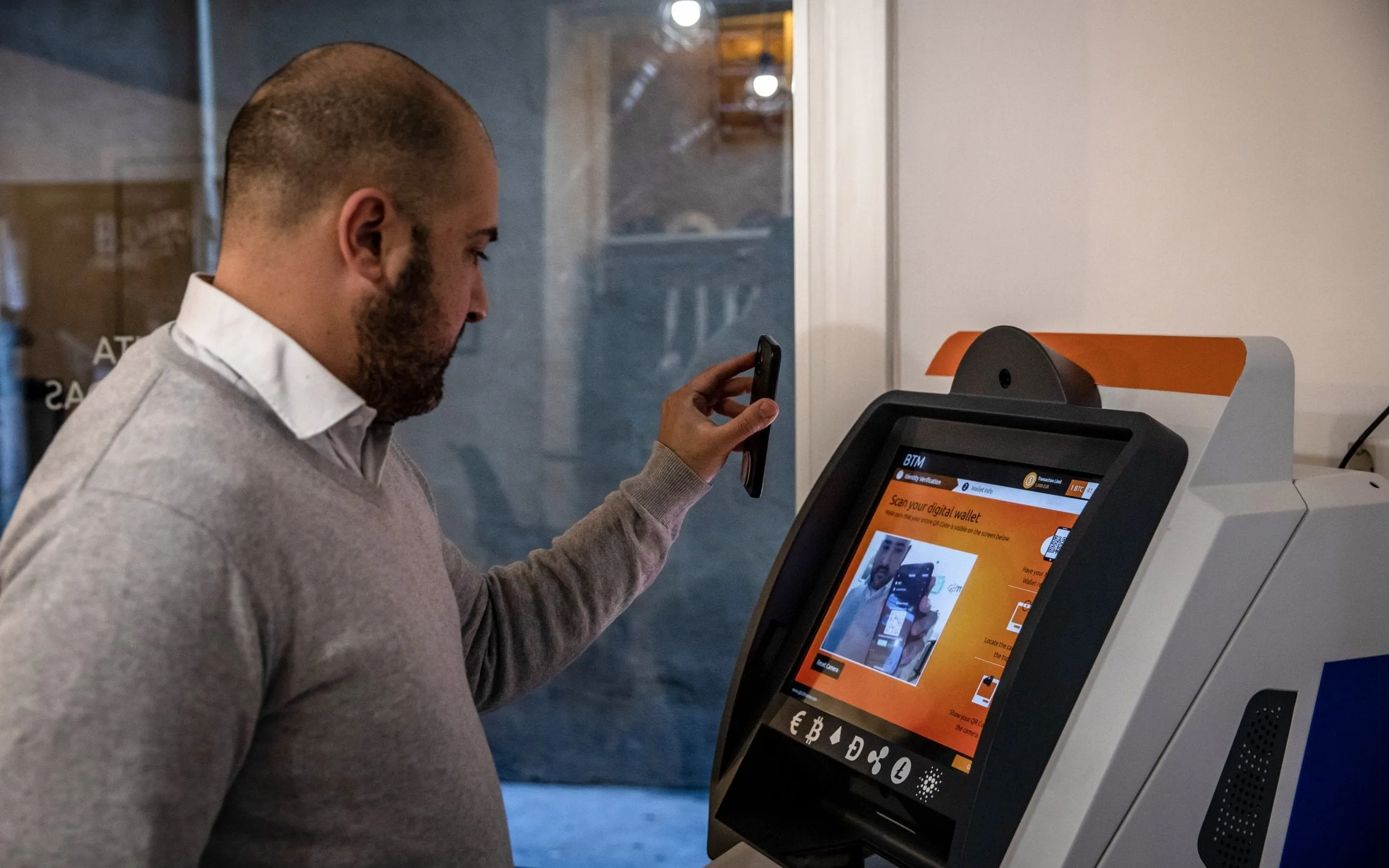
Step One: Set Up a Bitcoin Wallet
Before you go to an actual BTM, making sure you have a Bitcoin wallet can save you a lot of headaches. It is not the end of the world if you don’t have it but it will make the process safer and more convenient.
By setting up your own Bitcoin wallet beforehand, you ensure to have full control over your funds. When using a BTM, you’ll need to provide an address where the purchased Bitcoin will be sent. If you don’t have a wallet, the BTM may generate a paper wallet for you, but this means you’ll be relying on the BTM operator to handle your funds securely. Furthermore, by picking an application yourself, you can choose a reputable wallet provider that offers features like two-factor authentication, encryption, and backup options. Once again, there is nothing wrong with choosing to work with the paper wallet, and you will be able to send BTC or import the private key at a later convenience.
If you already have a Bitcoin wallet, you can simply scan the QR code of your wallet’s address at the BTM, making the transaction process faster and more convenient. Setting up a Bitcoin wallet is relatively easy and can be done through various wallet providers, such as Coinbase, Exodus, Trust, or Arctic Wallet. Make sure to choose a reputable wallet provider and follow best practices for securing your wallet, such as using strong passwords and enabling two-factor authentication.
Step Two: Find the Nearest Bitcoin ATM
Since BTMs are installed at physical locations, it would be more convenient for you to know where you are going beforehand. It can even help you choose a better fee or preorder the purchase.
To find a Bitcoin ATM, you can use online directories, check cryptocurrency apps, or ask community members or Bitcoin ATM operators.
Websites like Coin ATM Radar, CoinATMMap, and Bitcoin.com’s ATM map can help you locate the nearest Bitcoin or crypto ATM to your location. These directories provide information such as the machine’s location, operating hours, fees, and supported cryptocurrencies.
Another helpful source is some cryptocurrency apps, such as Coinomi and CoinJar. They have built-in features that help users locate nearby Bitcoin ATMs. These apps often provide real-time information about the ATM’s availability and transaction fees.
Engaging with the local Bitcoin community can be a valuable resource for finding Bitcoin ATMs. Joining online forums, Bitcoin meetups, or social media groups dedicated to cryptocurrencies can help you connect with people who are knowledgeable about the local Bitcoin ATM scene. If you are unable to find a Bitcoin ATM through online directories or apps, you can try reaching out to Bitcoin ATM operators directly. They may be able to provide you with information about their ATM locations or upcoming installations.
Step Three: Follow the Process
Once you are present at the location and find the machine, the process should be understandable enough. But just so you know what to expect, here is how the process usually works. Please note that depending on the machine, the flow and feature set can change.
To Buy Bitcoin
- Approach the BTM and select the language, if applicable. Choose “Buy Bitcoin” or a similar option from the BTM’s main menu.
- Verify your identity if prompted. The measures can vary from providing your phone number to logging in to an account or going through a full KYC procedure with an ID photo and selfie. It all depends on the amount you would like to buy and the manufacturer.
- Specify the amount of Bitcoin you want to purchase. Around this point, you can also be presented with some preliminary information on fees. Scan your Bitcoin wallet QR code using the BTM’s scanner.
- Confirm the transaction details and proceed. Insert cash equivalent to the specified amount.
- Wait for the BTM to process the transaction. The ATM will either send Bitcoin to your wallet or print out a redemption code.
- Before the transaction is finished, you may need some patience. Since it takes about six blockchain confirmations for a Bitcoin transaction to be considered irreversible, it can take up to an hour before the BTC shows up in your wallet.
To Sell Bitcoin
Remember that not all Bitcoin ATMs support this function. You are better off checking beforehand whether the ATM you are using is bidirectional.
- Approach the BTM and select the language, if applicable. Choose “Sell Bitcoin” or a similar option from the BTM’s main menu.
- Verify your identity using the required method: from a phone number or email address to a KYC procedure.
- Select the amount of Bitcoin you want to sell. You should be shown fees and rates as well at this step. Depending on the type of identification you provided in the previous step, you can have lower or higher limits.
- Next, the teller machine will generate a QR code for you to scan with your wallet app and send the BTC to. Confirm the transaction details and proceed. Wait for the BTM to process the transaction — Bitcoin transactions can take a while, up to an hour.
- When the transaction has been confirmed, collect the cash equivalent to the sold Bitcoin. If applicable, receive a receipt for the transaction.
Is Using Bitcoin ATMs Safe?
Everything sounds fine on paper but there are drawbacks to Bitcoin ATMs that you should be aware of.
BTMs typically charge higher fees compared to traditional cryptocurrency exchanges. The fees can vary greatly, so it’s important to check the fee structure of the BTM you plan to use. A usual number to expect would fall somewhere between the 7–12% range. In comparison, online platforms charge 1–5%.

Secondly, depending on your location, BTMs may not be readily available or easily accessible. It’s important to research and locate BTMs in your area before attempting to use one. As the data from Coin ATM Radar suggests, if you’re outside of North America, you might be out of luck!
Thirdly, BTMs may have a different exchange rate for buying and selling Bitcoin compared to other platforms. This can result in a less favorable rate when selling Bitcoin through a BTM.
Most BTMs require some form of identity verification, which may involve providing personal information and scanning identification documents. This can be time-consuming and may raise privacy concerns for some individuals.
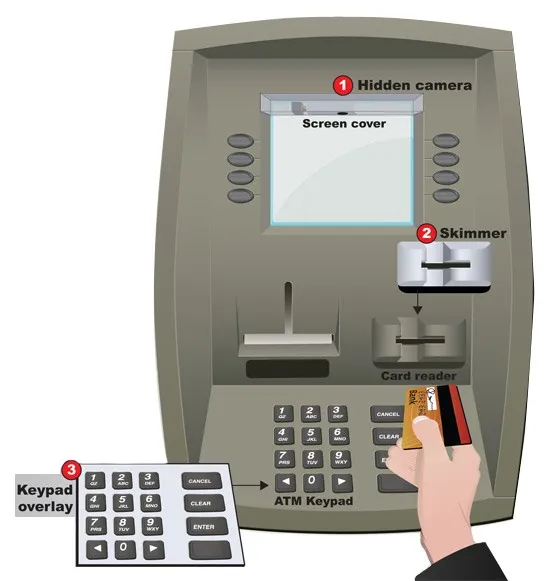
Last but not least, while Bitcoin teller machines can be safe to use, there is always a risk of encountering fraudulent or tampered BTMs. It’s important to choose reputable BTMs and take necessary precautions to ensure the machine is legitimate and secure.
Conclusion
Ultimately, a Bitcoin ATM is one of the many ways to get your hands on crypto or cash out, with its strengths and weaknesses. It poses a unique contrast of a real-world physical machine that helps you get a fully digital currency.
And after you have successfully bought BTC at one of these ATMs, you can swap it with hundreds of altcoins on ChangeHero for lower attractive fees and an even easier process 😏
For even more useful guides like this one, browse the ChangeHero blog to get to know the crypto world better. Subscribe to us on social media to stay tuned to the updates: we’re on Twitter, Facebook, Reddit, and Telegram.
People Also Ask
How much does a Bitcoin ATM charge for $100?
The fees charged by Bitcoin ATMs vary, but on average, you can expect to pay around 7–12% in fees. That makes the Bitcoin ATM fees at least $7 to $12 for a $100 transaction.
Can you cash out on a Bitcoin ATM?
Yes, you can cash out on a Bitcoin ATM. Bitcoin ATMs allow you to sell your Bitcoin and receive cash in return.
How do Bitcoin ATMs make money?
Bitcoin ATMs make money primarily through transaction fees. They charge a percentage-based fee on each transaction conducted through the machine.
Do all Bitcoin ATMs require an ID?
Not all Bitcoin ATMs require an ID, but many do. The requirement for ID verification depends on the operator and the jurisdiction in which the Bitcoin ATM is located.




